Light Collimation Film
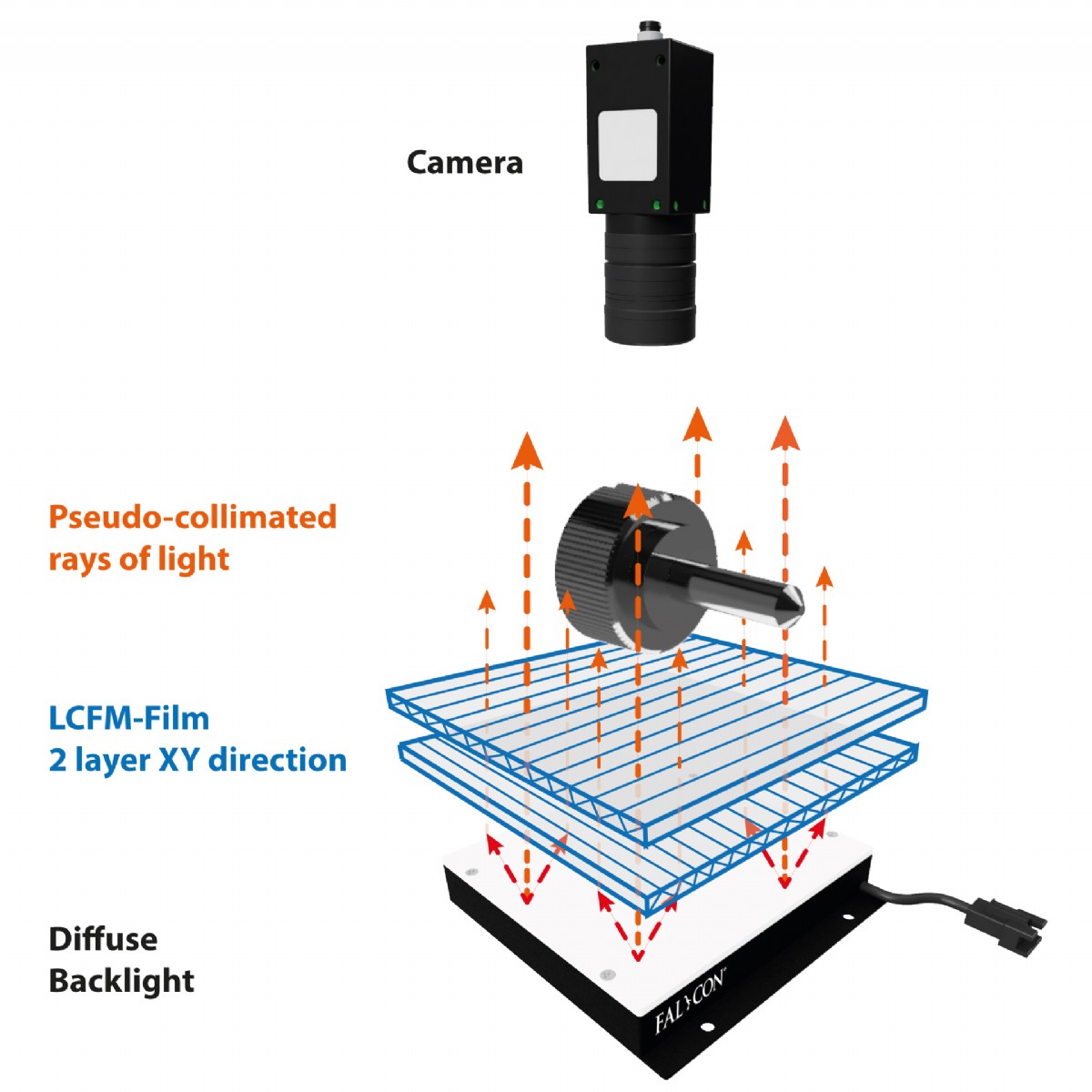
What Does a Collimation Film Do?
The collimator film (LCFM) or Light-Control-Film is based on a linear microstructured surface that specifically reduces the emission angle by blocking and redirecting oblique light rays, resulting in a controlled, perpendicular light output.
Function and arrangement
When two of these microstructured films are combined at a 90-degree rotation to each other, the light can be directed both horizontally and vertically. The films are mounted directly on top of the backlight diffusion plate.
Collimation film can be used on backlights (e.g., the FLDL-TP or FLFL series) as well as on bar lights (e.g., the FLDL or F2DL series).
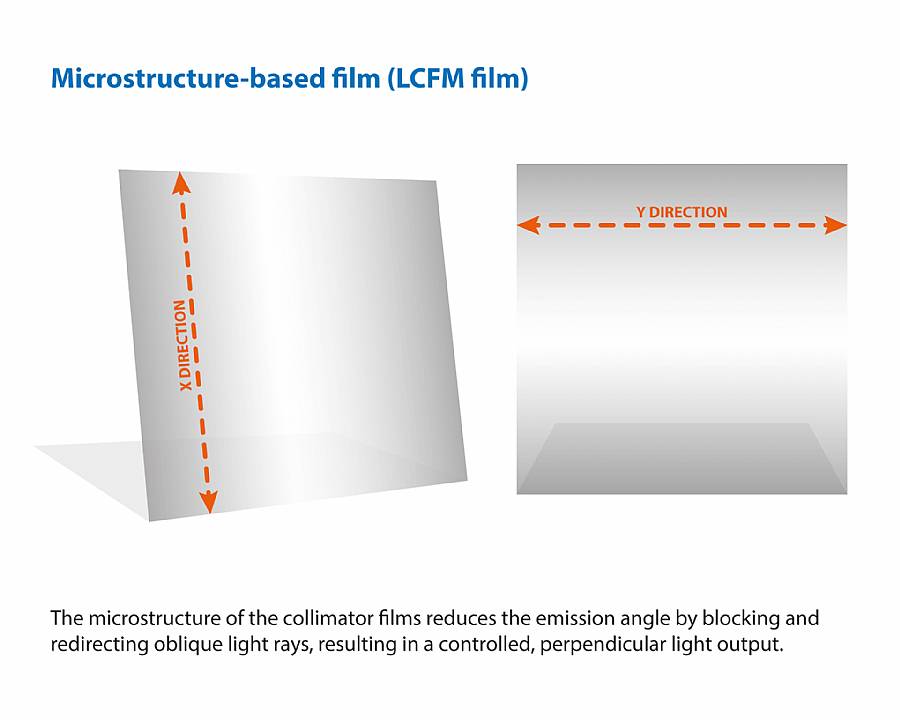
Advantages of Collimated Light:
-
Directed Light Output:
The prismatic structure directs the emitted light and generates nearly parallel beams. -
Improved Image Contrast:
The pseudo-collimated light guidance significantly enhances image contrast. Edges and silhouettes of components appear sharper and more clearly defined in transmitted light, which greatly improves measurement accuracy in machine vision systems. -
Increased Light Intensity:
At a distance of 100mm between the camera and the illumination, light intensity increases by approximately 75% compared to a standard backlight diffusor. At 250mm, the increase is around 90%. -
Compact and Cost-Efficient Solution:
The microstructure film provides a space-saving and economical alternative to large telecentric illumination systems. -
Reduced Glare:
The directional light reduces disruptive reflections – especially at manual workstations or in machine-proximate environments – thereby enhancing user comfort and workplace safety.
Without LCFM Film
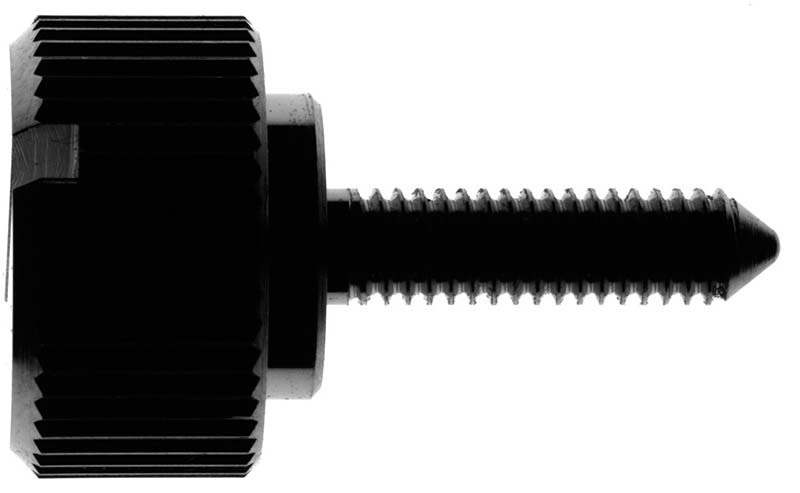
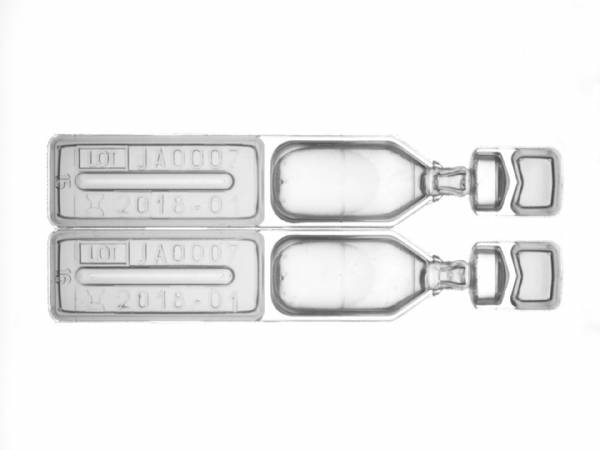
With LCFM Film
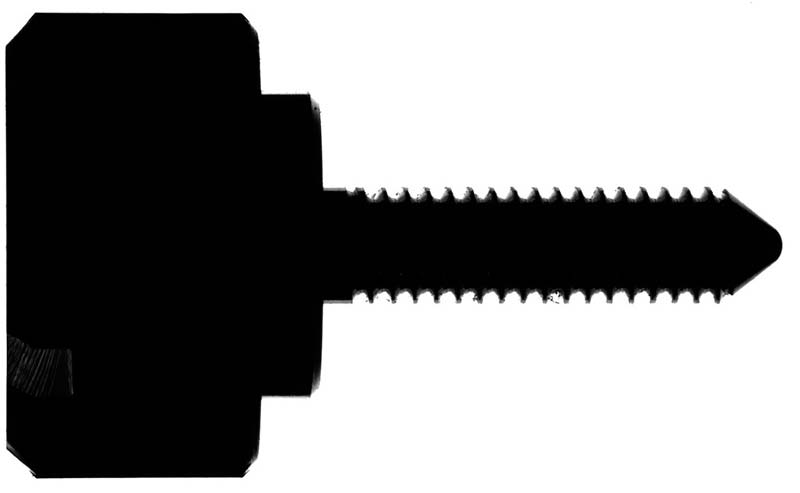
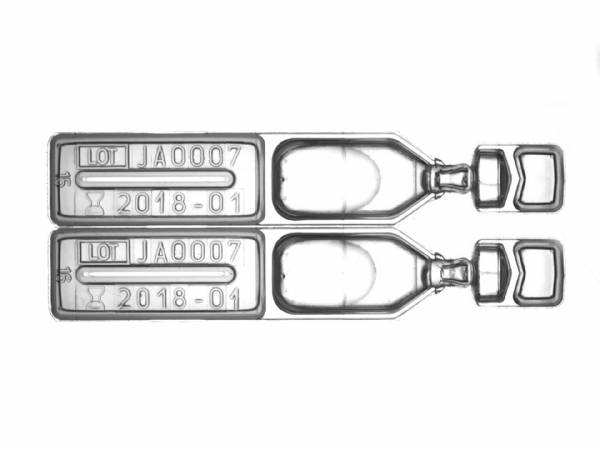
Looking for custom cuts?
Our collimator films are not only compatible with Falcon backlights – we also offer precision cuts tailored to your application.
Would you like a quote or have questions about our collimator films?
Get in touch with us now – we’ll be happy to advise you personally!